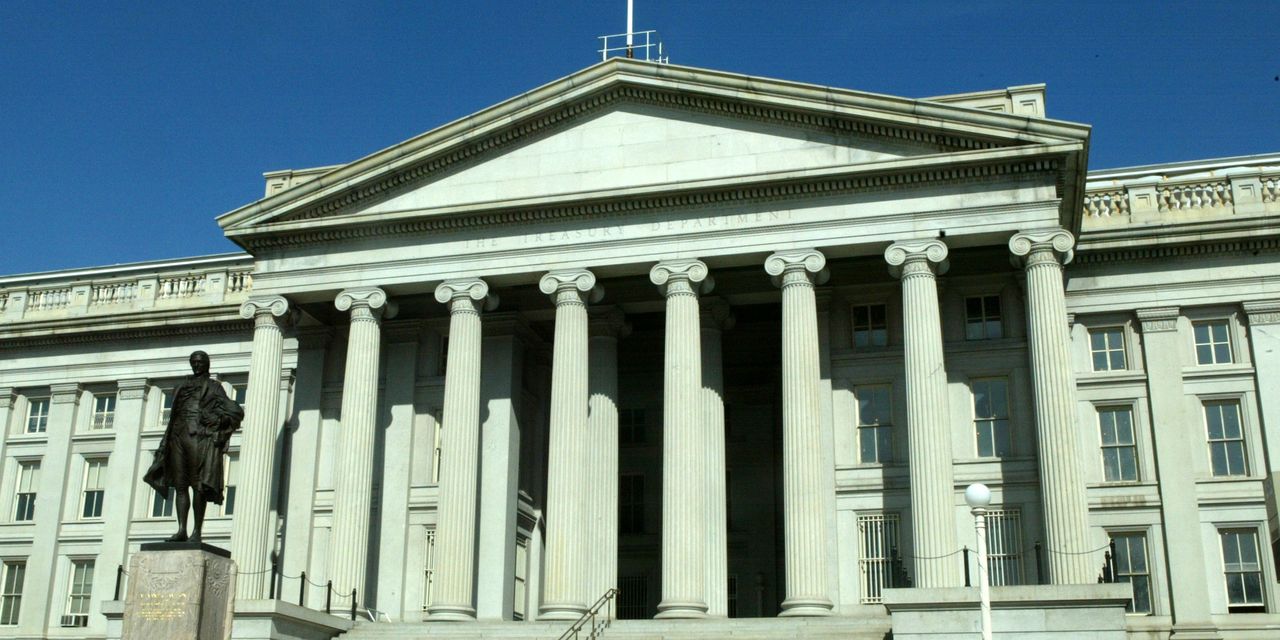The 10-year Treasury yield continued to pull back from 5% on Friday after moving tantalizingly close to surpassing that level in the previous session.
The yield touched 5% at 5:02 p.m. Eastern time on Thursday, only to drift back down, according to Tradeweb data. It ended Friday’s New York session down by 6.3 basis points at 4.924%.
Rising Middle East tensions gave way to renewed safe-haven demand in government debt on Friday that not only sent the 10-year yield
BX:TMUBMUSD10Y
lower, but dragged down rates on everything from 3-month Treasury bills
BX:TMUBMUSD03M
to the 30-year bond
BX:TMUBMUSD30Y.
Investors were trying to catch the proverbial falling knife by taking advantage of a cheaper 10-year Treasury note, the product of recent selloffs. Analysts warn that it’s difficult to have much short-term conviction in catching that knife, however, given the likelihood that the selloff could return.
One big reason is the onslaught of new supply from the U.S. Treasury as the result of the government’s growing borrowing needs, which is raising the risk that investors will keep demanding more compensation to hold long-dated debt to maturity.
On Oct. 30 and Nov. 1, which is the same day as the Federal Reserve’s next policy decision, Treasury is expected to provide updated guidance on its borrowing needs and auction sizes. Treasury’s refunding announcement could even upstage the Federal Open Market Committee — creating “fertile ground for a continuation of the selloff in Treasuries,” said BMO Capital Markets rates strategists Ian Lyngen and Ben Jeffery.
Over the next several weeks, “it becomes much easier to envision a surge in Treasury yields in anticipation of the upcoming coupon supply,” they wrote in a note on Friday. While the 10-year yield has stopped shy of 5%, “we continue to expect this milestone will be reached shortly.”
Stock-market investors have been focused on the prospects of a 5% 10-year yield because such a level would dent the appeal of equities and make government debt a more attractive investment by comparison.
Read: Why stock-market investors are fixated on 5% as 10-year Treasury yield nears key threshold
As of Friday, the 10-year yield, used as the benchmark on everything from mortgages to student and auto loans, has jumped 163.9 basis points from its 52-week low of almost 3.29% reached on April 5. The 10-year yield hasn’t ended the New York session above 5% since July 19, 2007.
Meanwhile, all three major stock indexes
DJIA
SPX
COMP
ended the day lower as the prospects of a widening conflict in the Middle East triggered a flight-to-safety trade into Treasurys.
Taking a step back, a 5% 10-year yield would imply that a Goldilocks-scenario of a U.S. economy — one that’s neither too hot or too cold, and able to sustain moderate growth — “is here to stay for a decade,” or that the Fed’s main interest-rate target needs to be materially higher on average over the next decade, according to BMO’s Lyngen and Jeffery. One of the biggest questions facing policy makers is whether the economy might be moving into a new stage in which even higher interest rates down the road could be required to cool demand and activity.
Though BMO Capital Markets is biased toward lower yields into the weekend given the absence of major economic data on Friday, technical indicators “continue to favor higher rates in the near-term,” and “our conviction that 5% will ultimately be traded through has grown.”
Read the full article here













